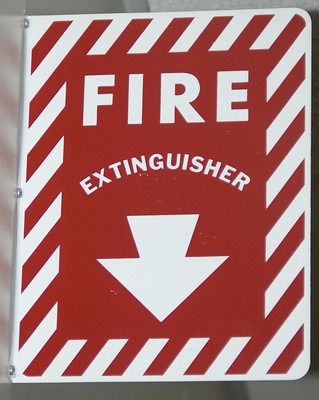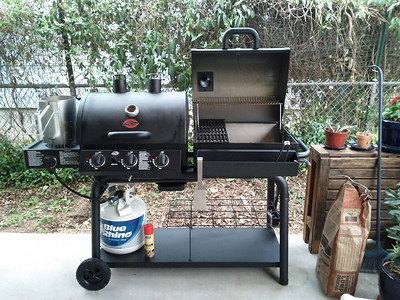
When dealing with a butane fire, which is classified as a Class C fire, it’s important to use the appropriate extinguishing agent. Class C fires involve flammable gases, such as butane, methane, or hydrogen.
Water is generally not recommended for extinguishing butane fires for several reasons:
- Ineffectiveness: Water may not be effective in putting out a butane fire, as it cannot effectively smother the flames or cool the area sufficiently to prevent reignition.
- Gas dispersion: Using water on a butane fire can cause the flammable gas to disperse, potentially spreading the fire or creating a flare-up.
- Conductivity: Water is a good conductor of electricity, and if there is an electrical component involved in the fire, using water could increase the risk of electrical shock.
The most effective method for extinguishing a butane fire is to cut off the fuel supply. This can be achieved by closing any valves, stopping the flow of gas, or disconnecting the fuel source. Eliminating the fuel supply will cause the fire to die down naturally.
Additionally, using a dry chemical fire extinguisher specifically designed for Class C fires is an effective method for extinguishing a butane fire. These fire extinguishers contain chemicals such as monoammonium phosphate, sodium bicarbonate, or potassium bicarbonate, which can help smother the flames and inhibit the chemical reaction that sustains the fire. Some fire extinguishers are labeled as ABC extinguishers, meaning they can be used on Class A (combustible materials), Class B (flammable liquids), and Class C (flammable gases) fires.
In a situation where a butane fire is encountered, personal safety should be the top priority. If the fire is small and manageable, use the appropriate fire extinguisher, but if the fire is out of control or poses a significant risk, evacuate the area and call emergency services immediately. Always make sure to have a safe escape route before attempting to fight any fire.
Effective Methods for Extinguishing Butane Fires
Extinguishing a butane fire requires specific methods and precautions to ensure safety and effectiveness. Here are the steps to take when dealing with a butane fire:
- Cut off the fuel supply: The most effective way to extinguish a butane fire is to eliminate its fuel source. This can be achieved by:
a. Closing valves: If the fire is caused by a leaking valve, close it to stop the flow of butane.
b. Stopping the flow of gas: If possible, shut off the main gas supply to the area where the fire is burning.
c. Disconnecting the fuel source: If the fire involves a portable butane container, such as a lighter or camping stove, remove or disconnect the fuel source if it’s safe to do so. - Use a suitable fire extinguisher: If the fire is small and manageable, use a dry chemical fire extinguisher specifically designed for Class C fires. These fire extinguishers contain chemicals such as monoammonium phosphate, sodium bicarbonate, or potassium bicarbonate, which can help smother the flames and inhibit the chemical reaction that sustains the fire. Some fire extinguishers are labeled as ABC extinguishers, meaning they can be used on Class A (combustible materials), Class B (flammable liquids), and Class C (flammable gases) fires.
- Prioritize personal safety: Before attempting to extinguish a butane fire, make sure you have a safe escape route and the fire is not blocking your exit. If the fire is large or spreading rapidly, do not attempt to fight it yourself. Instead, evacuate the area immediately and call emergency services.
- Call emergency services: If the fire is out of control, poses a significant risk, or you’re unable to extinguish it using the methods mentioned above, call emergency services for assistance. Provide them with the necessary information about the location and nature of the fire.
Remember, using water to extinguish a butane fire is not recommended, as it can be ineffective and potentially dangerous. It can cause the gas to disperse, potentially spreading the fire or creating a flare-up. Instead, focus on cutting off the fuel supply and using an appropriate fire extinguisher to smother the flames.
Type of Fire Extinguisher for Class C Fire
For Class C fires, which involve flammable gases like butane, methane, or hydrogen, it is recommended to use a dry chemical fire extinguisher. These extinguishers are specifically designed to combat fires fueled by flammable gases and are effective in smothering the flames and inhibiting the chemical reactions that sustain the fire.
Two common types of dry chemical fire extinguishers suitable for Class C fires are:
- BC Fire Extinguishers: These extinguishers contain sodium bicarbonate or potassium bicarbonate as their extinguishing agent. They are effective for both Class B (flammable liquids) and Class C (flammable gases) fires.
- ABC Fire Extinguishers: These extinguishers contain monoammonium phosphate as their extinguishing agent. They are multipurpose extinguishers suitable for Class A (combustible materials like wood, paper, and cloth), Class B (flammable liquids), and Class C (flammable gases) fires.
When selecting a fire extinguisher for a Class C fire, look for labels indicating that the extinguisher is suitable for Class C fires, such as “BC” or “ABC.” Always make sure to follow the manufacturer’s instructions for proper use and maintenance of the fire extinguisher, and ensure that it is readily accessible in case of an emergency.
In Summary
Using water to extinguish a butane fire can be ineffective and potentially dangerous. Water may not effectively smother the flames, and it can cause the flammable gas to disperse, leading to a potential spread of the fire or flare-ups. Additionally, if there is an electrical component involved in the fire, using water could increase the risk of electrical shock.
To safely and effectively extinguish a butane fire, it is crucial to use the proper methods. This includes cutting off the fuel supply by closing valves, stopping the flow of gas, or disconnecting the fuel source, and using a dry chemical fire extinguisher specifically designed for Class C fires. These extinguishers contain chemicals that can smother the flames and inhibit the chemical reaction that sustains the fire.
When dealing with a butane fire, always prioritize personal safety. Assess the size and risk of the fire and ensure you have a safe escape route before attempting to extinguish it. If the fire is large, out of control, or poses a significant risk, do not attempt to fight it yourself. Evacuate the area and call emergency services for assistance. By following these guidelines, you can minimize the risk of injury and property damage in the event of a butane fire.

Jeremy is a highly experienced professional propane technician with over 21 years of experience in the industry. Throughout his career, he has gained extensive knowledge and expertise in propane gas installation, maintenance, and repair, as well as in ensuring safety and compliance with industry standards. Mike has worked with various residential, commercial, and industrial clients, providing top-notch services and solutions to meet their propane needs. He is dedicated to his craft and passionate about delivering exceptional service to his clients.



